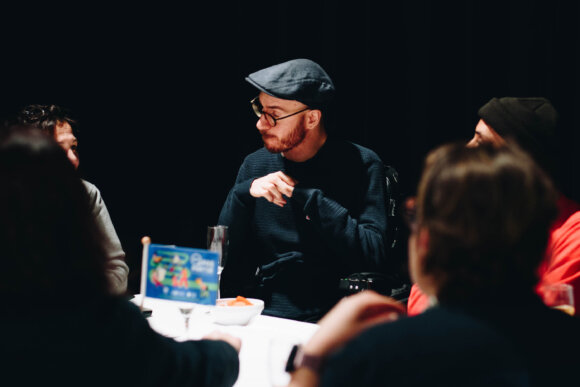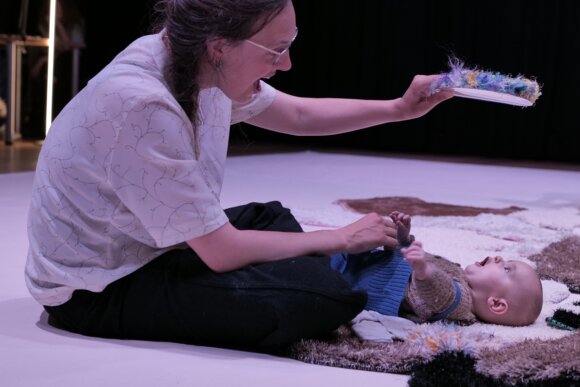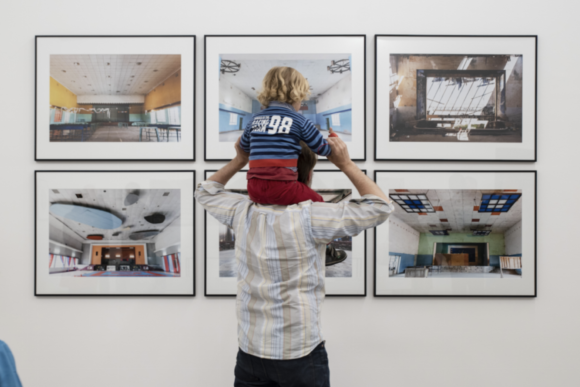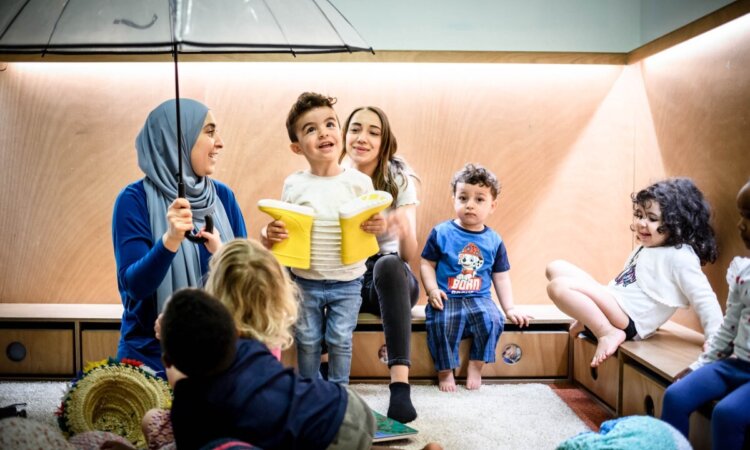
A welcoming space for the youngest children
Stephanie Lemmens
At Explo Labo, we want to inspire new ways of working with the youngest children, in the field of art and culture. This series of articles brings together examples of such innovative practices. In this first article, we zoom in on the Elmer nurseries and Huis van het Kind Anderlecht (= House Of The Child, an organisation for parents who have child-related questions). Both entities design their spaces in such a way that children want to explore them, interacting with their carers or parents.
Photo © Elmer
Elmer
Elmer consists of four nurseries in Brussels. They aim to improve the well-being, social opportunities and participation of families and children by organising neighbourhood services that offer Dutch-speaking, accessible, high-quality childcare. The importance of diversity and the belief in the positive growth opportunities of every individual – child, parent and employee – are important values in this regard.
Their nurseries are strongly committed to art and culture and draw inspiration from, among other things, the Reggio Emilia approach and the ideas of Italian educator and philosopher Loris Malaguzzi. "Besides love, art is the second language that everyone should have the opportunity to experience," says Gerd Lannoo, coordinator at Elmer Zuid. "Our nurseries are designed to challenge children to experiment and discover. We believe collaboration is very important: we seize the opportunities that arise from it."
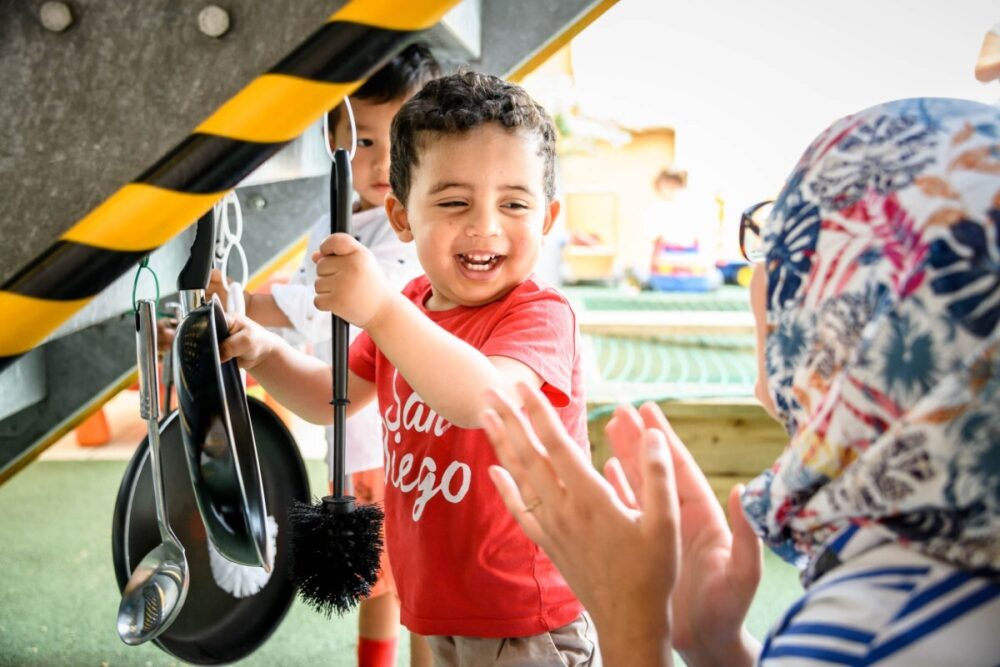
Gerd regularly collaborates with Arts Basics for Children (ABC), located in Schaarbeek and operating throughout Brussels. Their ABC House aims to be an open and dynamic research centre for art, culture and education, accessible to people of all ages. They support children's development from a specific architectural context. They work with a strong internal logic, in a space that stimulates and sensitises children in a direct and open way. Together with their partners, ABC investigates the needs and possibilities of the infrastructure and designs specific furniture, supplemented with books and play materials.
It is incomprehensible how many places aimed at children use bright red, green and yellow colours... This overstimulates children and leaves little room for imagination. If you hang Mickey Mouse figures everywhere, you have a different approach than if you leave the wall white and hang the children's work on it. The materials you work with also come into their own much better if you can lay them out on a beautiful, neutral wooden table.
- Gerd Lannoo, Elmer
The classrooms at Elmer Zuid were renovated and redesigned in collaboration with the architects of the ABC House. Children and teachers now feel more at home than ever. Elmer Zuid also continues to work with ABC on a sustainable basis. Gerd: "The great thing about ABC is that they want to inspire as many organisations as possible. The plans for the modular ABC furniture, for example, are available online and are relatively easy to implement yourself."
In addition, every month the nursery welcomes artists from ABC who give workshops to the carers: "This training in the workplace is very important. It teaches carers to think, play and work with materials in a different way. Afterwards, ABC leaves their materials behind for a while so that carers can experiment with them. For ABC, it's nice that the layout of our nursery supports their workshops."
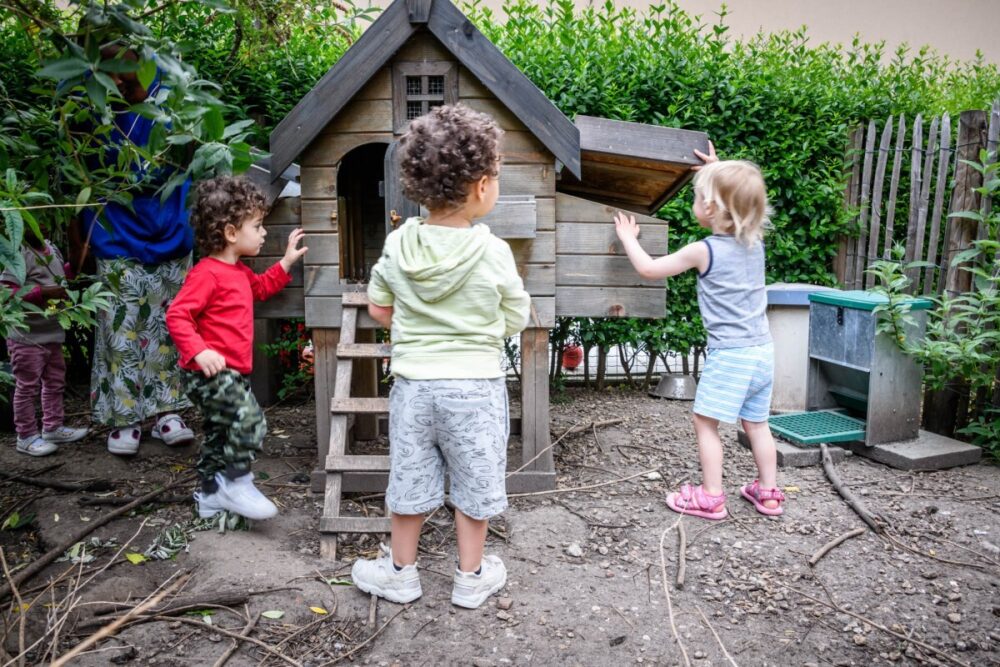
Three important principles of Reggio Emilia:
- The space
Should be light, connecting the inside and outside and challenging children to discover, explore and experiment. Teachers and carers are assisted in the construction and design by architects and educators. - The materials
These should inspire children to give shape to their discoveries and ideas.
- Observing and listening
Teachers and supervisors focus on the development of the child's identity, independence and creative skills.
Huis van het Kind Anderlecht
A ‘Huis van het Kind’ is a place where you can go for everything related to parenting and growing up. It’s a partnership between a local authority, civil society organisations, volunteers and citizens. The ultimate goal is to provide the best possible support to (expecting) families by connecting various areas of life and policy.
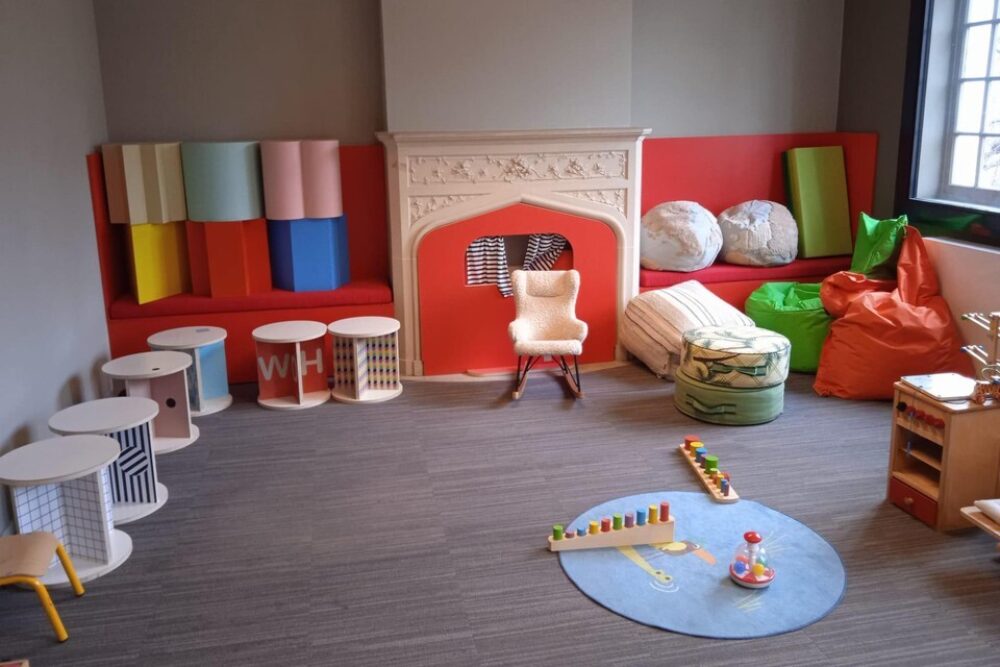
The central question is how to stimulate interaction between parents and children. The spaces are designed to encourage parents to interact with their children in as autonomous a way as possible. Nicoleta Vandeputte, coordinator of the Huis in Anderlecht, explains: "We don’t dictate what parents do with their children. Sometimes we explain what a story display case is, for example, but from there we let them work independently with their children. We are guided by the interests and stories of the child."
For me, it is very important that our house radiates warmth and that parents and children can enjoy each other's company. The interior design should inspire to discover each other and admire the world in an informal and relaxed way, based on our own stories.
- Nicoleta Vandeputte, Huis van het Kind
Soft pink and cheerful, colourful flower vases are a constant feature throughout the house. In addition, there are numerous 'hidden' spaces in the furniture where children can discover things and take out objects. Toddlers can also crawl into the furniture themselves. There are books, photos, flyers and pictures everywhere in the house, both for children and their parents. Familiarity and discovery alternate harmoniously in a homely and warm setting. Nicoleta: 'We don't have many toys in the house, but we emphasise searching, discovering and interacting with the space. We also use objects that children are familiar with from home: a spoon, a pot, a sieve, a handbag... Objects that are recognisable to the children. Parents, in turn, have the time and space to admire their child's reaction and get ideas for games to play at home."
Nicoleta's favourite space is the waiting room for medical consultations. Although this space is rather small, its layout has a big impact on the interaction between parents, children and professionals. For example, there are no traditional chairs. Parents can decide for themselves whether they want to be active or spend a quiet moment with their child. This turns waiting time into real quality time.


